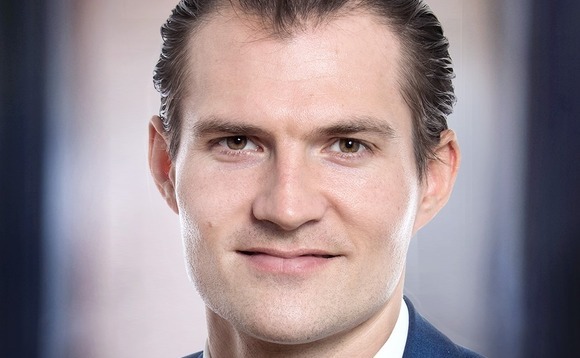
Q&A: Syz Capital's Marc Syz on PE fundraising and alternative asset allocations

Against a backdrop of shifting asset allocation dynamics, US interest in Europe and fluctuating valuations, 2023 could be a strong fundraising year for private markets, Marc Syz, managing partner at alternative asset manager Syz Capital, tells Unquote.
Can you tell me a bit about your strategy? How is it playing out in the current market?
Marc Syz: Today our big focus is on uncorrelated thematics, such as litigation financing; and in PE, it's on B2B family-owned businesses that are extremely resilient, not consumer-oriented, with high barriers to entry, and well capitalised. We look at small lower mid-cap opportunities at USD 50m-USD 200m EV. These might be more complex situations and require more negotiating, but they offer better growth prospects with more appealing risk/rewards.
We're looking at such themes in PE and other spaces - for example, litigation financing, pharma and music royalties, insurance (namely life insurance); a lot of these are uncorrelated by nature.
LPs such as big pension funds and endowments need to allocate to very large asset managers, because of the amount they need to deploy, yet these big asset managers are becoming asset allocators themselves, investing not only in megadeals where it is easy to deploy large amounts of capital; but in order to achieve their target returns, they need to enter more niche segments, where they delegate to our strategy.
What kind of visibility do you want to see on portfolios you invest in now? Would you prefer to see a blind pool or a reasonably well-deployed fund, given current valuation fluctuations?
MS: A lot of investors invest in big brands as they are considered a safe pair of hands and, therefore, more institutional investors feel comfortable to proceed with big brand blind pool investment funds. Some more sophisticated LPs also want co-investments and they will invest in blind pools if they get a sense of what the next deal will be as they look for more visibility.
For newer funds, or less well-known funds, investors do still want to have some kind of transparency in the portfolio. But not for reasons about whether the company was bought at the right price, but rather to ensure the fund is actually doing what it is supposed to do, following its investment process. Especially if they are a mid-market fund that is maybe only on its second vintage. Many investors will be doing due diligence on the previous funds and completed investments.
So in general, we are not seeing necessarily a preference for deployed funds versus blind pools due to a worry about valuation – except in the venture capital space, where certain players such as Tiger Global and the Vision Fund bought companies at stellar valuations. LPs will question them as to whether this might be a problem going forward.
Overall, we really see two categories: firstly, blind pools still being attractive with brand names, who will continue to raise a lot of money - they are now acting more as asset managers, even becoming banks at times; and secondly, more specialised investors that are not as well known, who do provide higher returns but need to provide increased visibility with one or two targets. The only trend shift we are witnessing is less capital will go to non-brand established blind pools.
What view are you seeing US LPs take on Europe at the moment?
MS: Forgetting currency and hedging, the US Stock Market has consistently outperformed Europe over the past 20 years, because of market size and homogeneity, ease of doing business, and market innovation. This is similar to some extent in PE, but for different reasons: more leverage is used in the US; and there are higher exit multiples.
But this also means there is much more competition in the US, even just looking at lower mid-market deals, where several family offices and sophisticated non-institutional investors might participate in the bidding process. With higher multiples being paid, it's pushing US LPs and PE firms to have a European strategy. They can even merge European companies with US ones. They often follow a cross-continental buy and build model, which has been the best performing strategy over the past decades.
So US firms are looking more at Europe: because of consistently lower multiples, and the fact that valuations most likely will continue to go down in next six to 12 months. offering great opportunities in the old continent. We are also seeing US VCs following such strategies.
Given the current energy crisis and increasing inflation, how likely is this to continue?
MS: We're not seeing a backtrack, if anything we are seeing more US investors looking at Europe, but this is very sector-, country- and strategy-specific.
I would differentiate between liquid and illiquid investment allocations. We have seen allocations to European equities in the last three months slowing considerably, but this is a worldwide phenomenon as people are reconsidering where they should allocate capital overall because of the current energy and inflation crisis.
In the last 12 months, US investors have been eyeing Europe as a market because of their lower comparable multiples, and they are under-allocated to the region. While people might be pausing allocations for now, US LPs are reconsidering investments into European funds, mainly because of the global macroeconomic uncertainty – but this is not just a European-linked phenomenon. I recently spoke to a best-in-class, high-performing crypto fund whose LPs had already announced in January they would not re-up in their next fund, mainly due to global volatility and uncertainty.
When we look at it as a whole, we still see some activity even in Europe, where apart from PE players and asset managers, you have US corporates still heavily active in M&A, such as UPS and DHL in the logistics space. This is providing competition to European PE, as they see good valuations and lower multiples and see long-term value to be held in Europe.
On the fundraising side, even brand names such as Blackstone are struggling to reach their highly ambitious capital raising targets. Large funds such Ardian and CVC have raised record fund sizes recently, but have also communicated that it was a tougher environment than usual for fundraising. It is also very fund-dependent.
Furthermore, if Europe were really on the brink of energy collapse and economic mayhem, this would be a much deeper issue, but this is not the base case. Fundraising has just become harder across the board.
How are you expecting 2023 to shape up as a fundraising year for alternative assets?
MS: For every fund we speak to, fundraising has been a lot tougher lately, even for brand names. People are wanting more clarity on inflation, monetary policy, and geopolitical foresight. Allocators won't deploy before the year-end, and will wait until January 2023 to assess and then allocate again.
But there is a lot of money sitting on the sidelines, which could transform into a big fundraising year for 2023 when it comes to allocations. Pension funds might not have been able to allocate this year, and currently, much of their capital is going into treasuries, but they will need to act next year. More liquid alternative strategies, such as hedge funds, also have a tougher time growing, since money is not going into public markets.
One needs to think about global asset allocation in big numbers. If you are the biggest sovereign wealth fund, let's say you had USD 1 trn in assets and lost USD 200bn. If you don't recoup that negative performance, the portfolio will need to get rebalanced into various allocation pockets. If the money is not there, though, it will not be allocated. Macro events will be a key driver behind lower allocations to alternatives. So when you dig a bit deeper, and you realise that you have less overall capital, this not only affects overall allocation, but also starts a bigger shift between asset classes and their respective allocations.
Overall, there is a strong continuous trend of more capital getting shifted into alternatives. People might not reach their targets, but with fund sizes still growing, and lots of capital sitting on the side-lines, more capital will most likely have to be deployed in 2023. Large institutions such as pension funds think in terms of buckets of asset classes, so they might decrease public asset allocations and increase their private market asset allocations - but it gets lost in the flux of asset switches as we see PEs not raising their funds this year, but eventually seeing larger demand in 2023. We're seeing big shifts to private market asset classes, also within private banks and wealth managers who are allocating more and more despite the illiquid nature, because of the better returns.
2023 could be a very good year for private markets asset managers, as they will see new LPs shifting into this area.
How are you seeing the large-cap LBO market adapt?
MS: There is a problem when it comes to the duration of funds: some are coming to the end of their life, with companies that couldn't be sold, IPO etc., so they are engaging in either continuation funds or secondary transactions. Secondary activity has been increasing lately and will continue. A lot more secondaries funds are being set up and more money is flowing into them, especially in the current environment, where more funds are being forced to sell off assets.
We have moved away from recent traditional large-cap LBOs, since a lot of these situations are highly price-competitive and highly levered, with refinancing becoming harder and harder, as well as more expensive. Banks are becoming more wary and a lot more selective. This will push down returns on one hand, and PE players will not be able to generate their historical returns for their investors. On the other hand, because of historical cheap debt and record dry powder, PE funds have called little capital from their committed LPs, infuriating many as their dollars are not being deployed. This might change going forward, where we will see PE groups putting more equity into their deals.
Latest News
Stonehage Fleming raises USD 130m for largest fund to date, eyes 2024 programme
Sponsor acquired the public software group in July 2017 via the same-year vintage Partners Group Global Value 2017
Stonehage Fleming raises USD 130m for largest fund to date, eyes 2024 programme
Czech Republic-headquartered family office is targeting DACH and CEE region deals
Stonehage Fleming raises USD 130m for largest fund to date, eyes 2024 programme
Ex-Rocket Internet leader Bettina Curtze joins Swiss VC firm as partner and CFO
Stonehage Fleming raises USD 130m for largest fund to date, eyes 2024 programme
Estonia-registered VC could bolster LP base with fresh capital from funds-of-funds or pension funds









